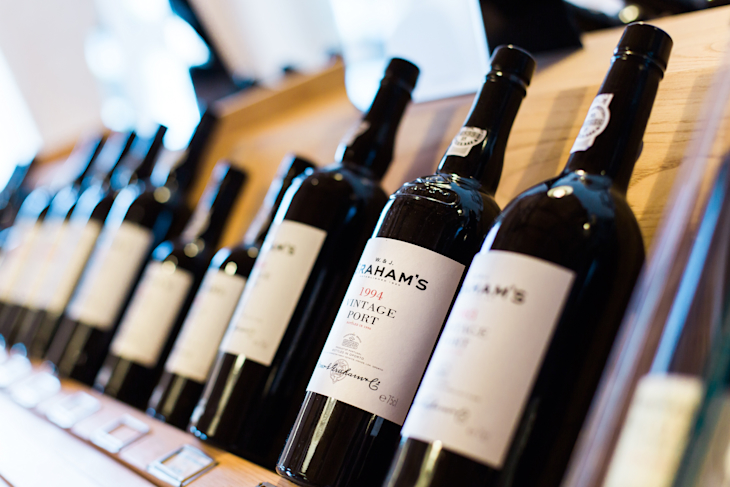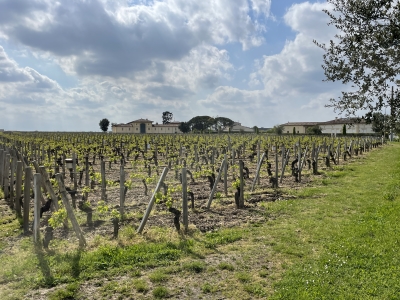How Much Is Your Wine Worth?
You have what you believe is a unique bottle of wine. Maybe someone gifted it to you or traded it with a friend because you thought the label looked cool. Or, perhaps you’ve been investing in wine through Vint and simply want to understand wine valuation better.
Whatever the case, you’ve come to the right place. Many factors go into a wine’s value, and we’ll discuss them in more detail here. We’ll even show you a few ways to determine the price of your wine yourself. Let’s talk about
What Determines the Value of Fine Wine?
- Producer & Vineyard
- Vintage
- Winemaking techniques
- Production quality
- Region and critical acclaim
- Micro-regions
- Packaging
Several factors play into wine valuation. From winemaking techniques to packaging, here are some of the most significant:
Producer & Vineyard
The two most important factors in determining a wine's potential value are the producer and the vineyard(s) from which the wines' fruit comes. Wines made by the most famous and sought-after brands in the world have traditionally garnered higher prices than those from lesser-known producers.
In many cases, these top producers source the fruit in their top wines from a select vineyard or vineyards, but this isn't always the case. For example, Penfolds Grange, the most famous wine from Australia, is made from fruit sourced from across South Australia. The same goes for the top Champagne Houses. They source fruit from many different vineyards across the Champagne region to create their top cuvees.
So, in these cases, the power of the producer name and the brand's reputation for quality drives the high values, not the land itself.
However, the above are exceptions and not the rule. The most expensive wines in the world tend to be produced from small single-vineyards, think Petrus in Bordeaux, Domaine de la Romanée-Conti's (DRC) wine from their eponymous Romanée-Conti vineyard in Burgundy. The unique terroir, the mix of soil, climate, and other factors, makes these wines so special and high-quality. In addition to the quality of the wines, these wines are so highly valued because they are made in minuscule quantities with grapes grown on small patches of the vineyard and are sought after by collectors across the globe.
Vintage
Another key driving factor in the potential value of a wine is the vintage in which it was produced. The price of wines, even from the top producers, can vary widely between wines produced in so-called “great” or “legendary” vintages and those produced in “off” or “bad” vintages. Factors in determining the quality of a vintage include conditions throughout the growing season, disease or pest issues, and any out of the ordinary weather events such as frost, hail, or heavy rain at important stages of the year such as bud break or harvest.
The conditions of the growing season impact the makeup of a wine and determine if the wine will develop and improve over time or not.
Winemaking Techniques
The biochemical process of transforming grapes into wine is “winemaking.” Wine is produced through many different techniques worldwide, and the technique used for a specific fine wine impacts quality and yield. If a winemaker uses techniques geared toward quality, it will naturally lead to higher costs than if they used yield-oriented techniques. This is because the products would only be available in limited quantities.
Other than the tools and technology a winemaker chooses to use, time can significantly impact the value of wines. For instance, reserve wine is aged in oak barrels for longer than non-reserve varieties, so reserve wine typically comes with a higher price tag than its non-reserve counterparts of comparable quality. Moreover, storing wine requires the producer to spend more on storage space, aging, materials, and other expenses, influencing the final price.
Production Quantity
As with most other assets, production quantity plays a critical role in the value of wines. A grape harvest always comes with fixed costs; these costs cannot be reduced, but they are not directly related to how many bottled products are produced. With that said, if the winemaker produces a scant amount of wine, the fixed costs will significantly influence the value of a single bottle. Products produced in mass quantities are not nearly as affected by fixed costs.
Region and Critical Acclaim
Because of climate and historical reasons, specific regions are best suited for producing quality wine. French regions like Burgundy and Bordeaux are some of the most well-known in France.
Wines from Barossa are recognized as some of the finest in Australia. Of course, you have the Barolo wine from the Piedmontese Langhe in Italy and Toscana’s Chianti Classico in Italy.
These are just a few examples. Many world regions are generally recognized as providing their wines with a certain element of prestige. Fine wines from these regions automatically benefited from the renowned grapes, winemaking skills of their people, local traditions, and many other components.
Furthermore, governments implement strict guidelines to protect many of these regions, which help preserve the quality of the wines produced while also guaranteeing that the winemakers are using the land appropriately. While these restrictions go a long way in preserving quality, they can also drastically impact the price and value of wines.
Another factor to consider is that wine experts worldwide greatly influence the value of wines. These professionals (e.g., sommeliers, winery owners, journalists, etc.) have forged careers in degusting and sampling fine wine.
They provide opinions on which types and varieties are most likely to excite consumers, investors, and restauranteers. The more positive reviews a specific wine receives, the higher its value will rise.
Micro-Regions
While the region impacts a wine’s value, there are also micro-regions, which are small areas within larger regions. Many of the world’s most renowned fine wine regions contain micro-regions.
Take, for example, the famous wine-producing region of Chianti. If the grapes of one bottle of wine are grown in a micro-region of Chianti that tends to cultivate a certain type of grape even more favorably than a different micro-region in Chianti, it could cause the wine’s value to rise above the same variety of wine from the other micro-region (the one not known for cultivating grapes quite as well).
Micro-origins that produce wines of superior quality in smaller quantities tend to come with a higher value and price tag.
Packaging
Generally speaking, wines that come in their original casing will be valued higher than those relabelled or repackaged. It’s also important to consider the unfilled space in each bottle. A bottle with low ullage demonstrates the wine has been exposed to oxygen, indicating that proper storage techniques were not used. Most importantly, proper official packaging typically equates to quality provenance assuring that the wines are real and not potentially faked fraudulent versions.
Moreover, if the wine label is smudged, it can suggest the wine was stored in damp conditions. These factors can negatively impact the quality of wines and, thus, harm the resale value.
How Do You Find Out How Much Your Wine Is Worth?
- Do some digging
- Consult a professional
- Consider an auction
Let’s figure out how much that special bottle of wine is worth.
Do Some Digging
First, look at the bale on the wine bottle to learn as many details as possible. You should see the producer, year, variety or type, origin, the size of the bottle, and other details.
Once you have this information, hit the web for some research. Start by looking for comparables or “comps.” Since the price of any given wine bottle can fluctuate on any given day, looking at comps will show you what your bottle is selling for the day you research. Each bottle of wine is initially decided by how much a buyer is willing to pay for it from an existing seller (the fair market value).
If you search online for comps, you will probably be able to find other bottles of the same wine, and if you can’t, you could have a really good problem on your hands.
Just find a bottle close to the one you are evaluating. You can use sites like:
Consult a Professional
If you come up with a number from your research, it’s a great starting part, but it’s not a stopping point. You will want to get professional opinions to confirm the value of your wine.
Many factors are at play, including provenance, physical condition, critical acclaim, production quality, etc. If you believe your wine is valued at $250 or more, it’s probably worth consulting a professional.
You want someone with deep knowledge of the wine market and the pricing for specific vintages and winemakers. Appraisers often determine the value of wines by reviewing receipts of where it was bought and asking for details about how it has been stored and inspecting the wine in person.
They will look to see if there is ullage or if the label or foil sleeve has been damaged. Furthermore, because there are wine forgeries at play, appraisers are very particular in examining each wine bottle to confirm that its characteristics match and that the label is original.
Understand that you could pay for a professional valuation appraisal, and these rates could lower your selling price if you find a buyer. Because of this, it typically isn’t worth it to get a single bottle appraised.
Consider an Auction
Another way to determine the value of wines is to participate in a wine auction. Often, you can get an auction estimate for free. If you are handling an extremely valuable bottle, many appraisers will offer to provide a valuation and advise you on selling options without charging you a fee. But, be aware that auctions tend to charge buyers extremely high fees, so purchasing prices can be lower than those on the open market. It is only recommended to sell extremely rare or sought after wines that might start a bidding contest and thus improve profits via an auction house.
Or, you could go through an auction site, assuming you could meet the minimum per consignment. Even if you don’t want to sell through these sites, they can be excellent places to find comps.
“Wining Down”
So, what do you do with that special bottle of wine? Whether you want to sell it or are just curious, it’s a good idea to determine how much it’s worth. Remember all the factors that influence the value of wines, and consider the tips above for finding out how much you could sell your fine wines for. Join the exciting world of wine investing and let Vint help you build a top-notch collection.
Sources: 2020 Burgundy: Classic Wines From an Extreme Season | World of Fine Wine What Is a Master Sommelier? How to Become a Wine Expert | MasterClass Bottle Fill Level Abbreviations | Wine-Searcher


